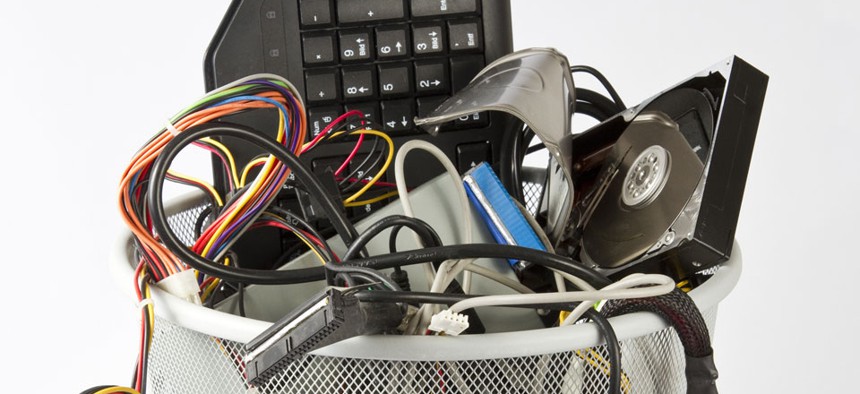Commerce Trashes $170,000 Worth of Tech to Disinfect Imaginary Viruses

Biehler Michael/Shutterstock.com
IG: Computer Incident Response Team member assigned to handle the perceived malware wasn't trained, lacked critical skills.
After detecting malicious software in system components at Commerce Department headquarters, federal officials in 2012 disconnected the Economic Development Administration's computer infrastructure, annihilated $170,000 worth of equipment and cut off staff email and data access nationwide, according to an internal audit.
The mitigations were overkill. But department officials would not discover this until more than a year later.
The Commerce inspector general’s office "found neither evidence of a widespread malware infection nor support for EDA’s decision to isolate its IT systems" from the building's network, states a June 26 evaluation.
In late 2011, the Homeland Security Department, which monitors federal networks for abnormal activity, notified Commerce about possible worms in the department’s systems.
Commerce traced the problem to parts of systems on the headquarters’ network, which supports the Economic Development Administration. That agency, which also has six regional offices, works to encourage U.S. entrepreneurship and competitiveness.
Believing the issue was widespread, the Economic Development Administration asked Commerce to first disconnect its systems from the Herbert C. Hoover Building’s network, according to the IG report. As a result, in January 2012, all employees inside and outside Washington lost access to email and websites. Personnel outside the Beltway also lost connectivity to database applications and other information at headquarters.
Agency officials “concluded that the risk, or potential risk, of extremely persistent malware and nation-state activity (which did not exist) was great enough to necessitate the physical destruction of all of EDA’s IT components," the audit states. Officials subsequently demolished desktops, printers, TVs, cameras, computer mice, keyboards and other IT parts priced at more than $170,000.
It wasn’t until April that the agency brought the workforce back online using alternative services. But the demolition continued.
"By Aug. 1, 2012, EDA had exhausted funds for this effort and therefore halted the destruction of its remaining IT components, valued at over $3 million," the auditors wrote.
One cause for the confusion: The department Computer Incident Response Team member assigned to the job was unqualified. The incident handler “had minimal incident response experience, no incident response training, and did not have adequate skills to provide incident response services,” the report states. Rather than hand the agency a list of possibly infected components, the employee mistakenly provided a roster of 146 components within the network. Only six parts were contaminated.
In total, the agency spent more than $2.7 million—over half of its fiscal 2012 budget -- on recovery efforts.
Not until the IG informed Commerce that there was no malware plague did the department take steps to recover earlier this year, the auditors wrote. The repairs took five weeks, in contrast to the one year the agency wasted chasing after ghost viruses.
The Verge first reported the inspector general's findings on Monday.
In a June 12 response to a draft audit, Commerce officials defended the safety measures taken.
"EDA acted out of an abundance of caution in an effort to protect the IT security and privacy of our staff, the Department of Commerce, grantees, other federal partners and clients with whom we interacted electronically," wrote Matt Erskine, Commerce deputy assistant secretary for economic development. "Despite the disruption, EDA continued to conduct and complete its important work and provided its grantees and applicants with excellent customer service."
(Image via Biehler Michael/Shutterstock.com)






